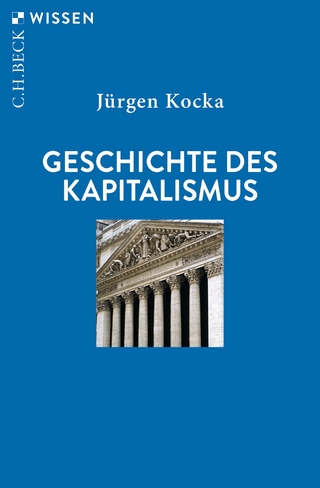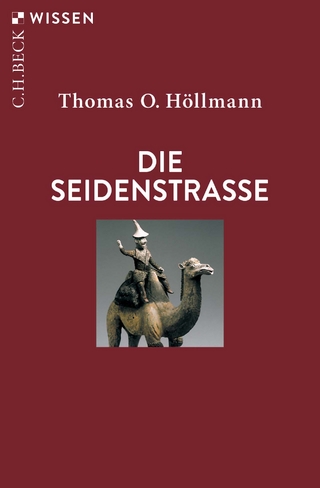
Mercantile Bombay
A Journey of Trade, Finance and Enterprise
Seiten
2021
Routledge India (Verlag)
978-0-367-77418-9 (ISBN)
Routledge India (Verlag)
978-0-367-77418-9 (ISBN)
This volume reclaims Mumbai’s legacy as a global financial centre of the 19th to the first half of the 20th century. It shows how Mumbai, or erstwhile Bombay, once served as a central node in global networks of trade, finance, commercial institutions, and most importantly trading communities.
This volume reclaims Mumbai’s legacy as a global financial centre of the 19th to the first half of the 20th century. It shows how Mumbai, or erstwhile Bombay, once served as a central node in global networks of trade, finance, commercial institutions and most importantly trading communities. In doing so it highlights that this city more than any other Indian city still possesses all these virtuous elements making it an appropriate location for a financial special economic zone (SEZ) – an idea shelved temporarily.
The book explores how the city flourished in its heyday as a trading, financial, commercial and manufacturing hub in a globalised colonial world. While the city’s importance as a nodal financial hub in the global economy ebbed post India’s Independence and the Second World War, the multi-cultural city found renewed importance following the forex crisis of 1991. Institutions (the RBI, SEBI and State Bank of India headquarters), capacities, experiences, communities and talent centred in Mumbai revived its position, while managing the transition to a more open economy. Though Mumbai is not yet an international financial centre (financial SEZ) like London, New York, Dubai, Singapore, Hong Kong, this volume explores why it has all the essential elements to become one today, and looks at the city as a trading city, a global financial centre, and a city of enterprise.
An introspective read on India’s financial capital, this volume will be essential for scholars and researchers of economics, business studies and commerce. It will be of great interest to policy makers, city-headquartered business houses, financial institutions and its people.
This volume reclaims Mumbai’s legacy as a global financial centre of the 19th to the first half of the 20th century. It shows how Mumbai, or erstwhile Bombay, once served as a central node in global networks of trade, finance, commercial institutions and most importantly trading communities. In doing so it highlights that this city more than any other Indian city still possesses all these virtuous elements making it an appropriate location for a financial special economic zone (SEZ) – an idea shelved temporarily.
The book explores how the city flourished in its heyday as a trading, financial, commercial and manufacturing hub in a globalised colonial world. While the city’s importance as a nodal financial hub in the global economy ebbed post India’s Independence and the Second World War, the multi-cultural city found renewed importance following the forex crisis of 1991. Institutions (the RBI, SEBI and State Bank of India headquarters), capacities, experiences, communities and talent centred in Mumbai revived its position, while managing the transition to a more open economy. Though Mumbai is not yet an international financial centre (financial SEZ) like London, New York, Dubai, Singapore, Hong Kong, this volume explores why it has all the essential elements to become one today, and looks at the city as a trading city, a global financial centre, and a city of enterprise.
An introspective read on India’s financial capital, this volume will be essential for scholars and researchers of economics, business studies and commerce. It will be of great interest to policy makers, city-headquartered business houses, financial institutions and its people.
Sifra Lentin is a Mumbai-based author and Bombay History Fellow at Gateway House: Indian Council on Global Relations, a foreign policy think tank in Mumbai, India. Mercantile Bombay: A Journey of Trade, Finance and Enterprise is her first book on Bombay. Other books written by her are: the Indian Navy’s Western Fleet coffee-table book A Salute to the Sword Arm – a Photo Essay on the Western Fleet (April 2007), and more recently Our Legacy: The Dwarkadas Family of Bombay (March 2018).
Introduction 1. How Bombay became the confluence of commerce and culture 2. The port and the city 3. Migrants in the city and their overseas networks 4. Émigrés of the Bombay Presidency 5: Finance, desi and videshi 6. Mercantile and a multicultural city
| Erscheinungsdatum | 19.11.2021 |
|---|---|
| Reihe/Serie | The Gateway House Guide to India in the 2020s |
| Zusatzinfo | 5 Tables, black and white; 4 Line drawings, black and white; 4 Illustrations, black and white |
| Verlagsort | London |
| Sprache | englisch |
| Maße | 138 x 216 mm |
| Gewicht | 290 g |
| Themenwelt | Geschichte ► Teilgebiete der Geschichte ► Wirtschaftsgeschichte |
| Wirtschaft ► Betriebswirtschaft / Management ► Unternehmensführung / Management | |
| Wirtschaft ► Volkswirtschaftslehre ► Makroökonomie | |
| ISBN-10 | 0-367-77418-6 / 0367774186 |
| ISBN-13 | 978-0-367-77418-9 / 9780367774189 |
| Zustand | Neuware |
| Haben Sie eine Frage zum Produkt? |
Mehr entdecken
aus dem Bereich
aus dem Bereich
eine Globalgeschichte des Kapitalismus
Buch | Hardcover (2023)
C.H.Beck (Verlag)
38,00 €


